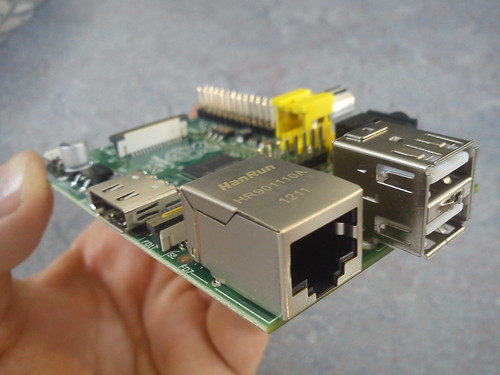Raspberry Pi: too much interface!

I have enjoyed a veritable deluge of technology over the past week. My laptop died, to be replaced with a shiny triple-boot MacBook. My groaning, creaking Sony Xperia mobile croaked, swiftly forgotten in the reflected light of the HTC One V.
And, most excitingly of all, my Raspberry Pi mini-computer-of-the-future arrived!
Unfortunately, with all the other configuration shenanigans going on, the Pi is sat in an anti-static sleeve, blu-tacked to the desk to prevent it from being wafted skywards by a passing breeze. It is small.
What is most noticeable amongst the smallness is the sheer size of the interfaces -- the chunky ethernet, the double USB ports, an audio and a video port (I think) and even the HDMI video output. All of them dwarf the actual computer itself. Which is amazing.

Too much interface: the ports on the Raspberry Pi
This led me to thinking of an analagous digital parallel: the miniaturizationism of the interface in software. I’ve just installed Google Chrome beta on the HTC. It is so minimal it makes De Stijl movement look like a bunch of gothic Victorian interior decorators. “I am so out of your way, I am hardly here”, it declares, unobtrusively.
And this is the same for other software too Sublime Text, my editor of choice, uses a Heads Up Display type fuzzy finder, and the Firefox browser menus have shrunk to an almost indecent extent.
This is all very well for software but poor old hardware is lumbered with USB and ethernet for a while longer, until which point everything runs over wireless and/or mind melding.